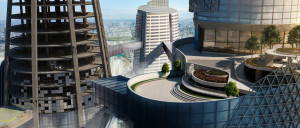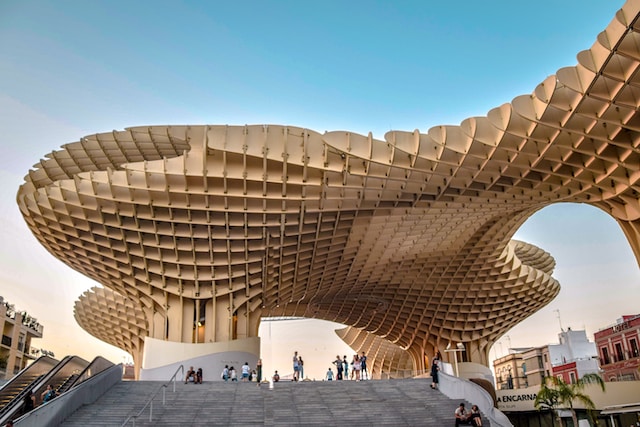Introduction
Architectural design is all about planning buildings. It resembles drawing an image of a house or a school before you fabricate it. This arranging assists us with sorting out what the structure will resemble and how it will function. Making structures isn’t just about what they look like, yet in addition about how they assist individuals with living, work, or play inside them. It’s a major region of the planet around us.
Engineering configuration could sound extravagant, yet something individuals have been accomplishing for millennia. It’s how draftsmen, who are individuals that plan structures, plan and make spaces for us to live in. They contemplate what a structure ought to resemble, how enormous it ought to be, and what it ought to be made of. They make drawings and models to help them, and others, comprehend what the structure will resemble when it’s fabricated.
Have you at any point strolled into a structure and thought, “Goodness, this spot feels decent!”? That is on the grounds that somebody put a ton of thought into planning it. Structures are all over the place, and how they’re planned hugely affects our lives. A well-designed school helps you learn better. A well-designed house makes you feel cozy. Design helps make buildings safe, comfortable, and beautiful, all at once.

Key Elements of Architectural Design
Form and Aesthetics
The form of a building is its shape and size, and aesthetics is a fancy word for how it looks. An architect thinks about these things so that a building is not just useful but also nice to look at. Envision a library that seems to be a monster heap of books. That is a cool thought, correct? Form and aesthetics make buildings interesting and fun.
Functionality and Purpose
Every building has a job. A hospital heals people. A school teaches. A home keeps families cozy. At the point when planners plan structures, they ponder what the structure needs to do. That assists them with concluding the number of rooms there that ought to be, where the entryways go, and loads of different things.
Manageability and Eco-benevolence
In this day and age, we need to contemplate the planet. That is the reason numerous planners contemplate maintainability, and that implies planning structures that don’t hurt the climate. They might use special materials, like recycled things, or make a building that uses less energy to keep it warm or cool.
Design Process
Research and Analysis of User Needs
Prior to drawing anything, an engineer needs to understand what individuals need. On the off chance that they’re planning a school, they need to know the number of children that will be there, what subjects they’ll realize, and significantly more. This piece of the cycle implies posing loads of inquiries and finding solutions.
Conceptualization and Ideation
Next, the architect starts dreaming. They think of cool ideas and what might be possible. They’re not worrying about every little detail yet, but they’re starting to make a plan.
Sketching and Creating Preliminary Designs
After they’ve got some ideas, they start to draw. They make sketches and sometimes build small models out of paper or computer programs. This helps them see if their ideas will work in real life.
The Role of Materials – Architectural Design
Impact of Material Choice on Design – Architectural Design
What you build something out of matters. Think about a cardboard box. If you made a house out of cardboard, it would fall apart in the rain! Architects choose materials that make a building strong, safe, and look nice too.
Incorporating Traditional and Modern Materials – Architectural Design
Sometimes, architects use old-fashioned things like wood or stone. Other times, they use new stuff like glass that’s super strong or metal that looks really cool. By using all kinds of materials, they can make buildings that fit into a neighborhood or stand out.
Spatial Planning – Architectural Design
Efficient Space Utilization – Architectural Design
Ever played a puzzle game where you fit pieces into a space without any gaps? Spatial planning is kind of like that, but for buildings. It implies utilizing space. A designer needs to contemplate where everything goes so that there’s sufficient space for everything, yet in addition so the space doesn’t feel excessively unfilled or excessively swarmed.
Flow and Circulation Within the Building – Architectural Design
Envision a structure where you need to go through the kitchen to get to the restroom. That couldn’t seem OK, acceptable? Stream and course are tied in with ensuring individuals can undoubtedly move around inside a structure. Hallways, stairs, and doors are placed just right, so everything feels natural and easy.
Aesthetics in Architecture – Architectural Design
Importance of Visual Appeal – Architectural Design
Have you ever come across a building that made you exclaim, “Wow!”? That’s visual appeal. It’s about how a building looks and feels. A lovely structure can fulfill individuals by simply checking it out. Feel is a major piece of what makes engineering so fascinating and energizing.
Incorporating Cultural and Historical Influences – Architectural Design
Sometimes, buildings tell a story about where they are or who made them. Architects might include designs or symbols that are meaningful to the people who live there. For example, a building in a historical part of town might have old-fashioned details that make it fit right in.
Functionality and Practicality – Architectural Design
Designing for Usability – Architectural Design
A building has to be more than pretty; it has to work! Usability means that everything is where it should be and works how it should. Light switches are in easy-to-reach places, doors are wide enough for everyone, and windows are placed to let in lots of natural light.
Addressing Accessibility and Safety Concerns – Architectural Design
Everybody should be able to use a building, whether they walk, use a wheelchair, or have other needs. Accessibility is about making sure that’s possible. Safety is equally vital. Buildings are designed so they’re safe in emergencies like fires or earthquakes.
8.Sustainability and Green Design
Integration of Eco-friendly Features – Architectural Design
Green design is about being nice to our planet. That might mean using special windows that keep heat inside or roofs that collect rainwater. Architects use cool tricks like these to make buildings that don’t waste resources or harm the environment.
Energy-Efficient Design Principles – Architectural Design
Energy efficiency means not wasting electricity or other kinds of energy. Imagine a house that stays warm in the winter without having to blast the heater. That’s what energy-efficient design does. It helps save money on bills and also helps the Earth by not using up so much energy.
Technology and Innovation – Architectural Design
Embracing Smart Technology in Design – Architectural Design
Technology has taken over our lives. From smartphones to smart cars, why not smart buildings? Architects are now using tech to make buildings even cooler. Imagine lights that turn off by themselves when you leave a room or windows that darken when the sun shines too bright. These are called “smart” designs, and they’re changing the way we live in buildings.
Creating Futuristic and Adaptable Spaces – Architectural Design
Structures don’t need to be trapped previously. Planners are cooking up spaces that vibe like something out of a sci-fi film. Be that as it may, it’s not just about looking cutting edge; it’s tied in with having the option to change and develop. A versatile space may be a room that can expand or more modest on a case by case basis or a structure that can change its utilization over the long run. It’s all about thinking ahead.
Cultural and Contextual Considerations
Design’s Relationship with Local Culture – Architectural Design
A structure isn’t simply a spot to live or work; it tends to be a piece of the local area’s story. Draftsmen ponder individuals who will utilize the structure and where it’s being fabricated. In certain spots, structures could have extraordinary varieties, shapes, or enrichments that mean something to the neighborhood individuals. Design can celebrate what’s unique and special about a place.
Fitting into the Existing Urban Fabric – Architectural Design
At the point when you add another part of a riddle, it needs to find a place with the pieces as of now there. It’s something very similar with structures. A new building has to fit in with the ones around it. It might be the same height or use similar materials. Or it might be something totally different that still feels right. This is how architects help build cities that feel connected and whole.
Case Studies – Architectural Design
A few structures are astounding to the point that individuals come from everywhere the world to see them. Consider the Sydney Show House or the Eiffel Pinnacle. These are notable plans, and that implies they stick out and address something greater. They become symbols of a city or even a whole country. They inspire people and show what’s possible with creativity and hard work.
But what makes these buildings so special? By looking closely, we can learn about the ideas and decisions that went into making them. This is like being a detective but for buildings. We can see how the architect thought about the shape, the materials, the way people would use it, and a lot more. It’s a way to learn about how great design happens and what it can do.
Challenges in Architectural Design
With regards to planning structures, such as making a thing of beauty individuals can live in, work in, or simply respect from a far distance. Yet, making this workmanship is certainly not a simple errand.
First, there’s the big challenge of balancing form and function. This means making a building that looks great but also works well. Think of a museum with a wild, curvy roof. It might be a breathtaking sight, but what if it leaks rainwater? The building has to look good and be practical.
Next, there’s the challenge of meeting client expectations. Imagine being asked to design someone’s dream house, and they want it to have ten bedrooms, a swimming pool on the roof, and look like a castle. That’s a tall order! Understanding what the client wants and finding a way to make it happen within budget and regulations is no small feat.
The Future of Architectural Design
But even with all these challenges, architects are looking to the future and finding new ways to amaze us.
One exciting direction is embracing sustainable and adaptable designs. Sustainability is about making buildings that are kind to the Earth. This might mean using solar panels or recycled materials. Adaptable design means creating spaces that can change over time. Today’s office building might become tomorrow’s apartment complex.
Another cool idea is exploring virtual reality and AI integration. Virtual reality could let you walk through a building before it’s even built. Imagine putting on a headset and walking through your new home, picking paint colors, and arranging furniture. AI could help architects come up with new designs or even keep a building running smoothly after it’s built.
Conclusion
So, what have we learned about architectural design? It’s a field brimming with difficulties, such as making lovely structures that likewise function admirably and keeping clients blissful. And yet it’s a field stacked with possible results, with new developments and considerations that are affecting how we live, work, and play.
Furthermore, we should not disregard the effect of engineering plan on our environmental factors. Structures are something other than spots to be; they shape our networks and our lives. They can cause us to feel glad, safe, and roused. They recount what our identity is and what we esteem. Draftsmen resemble the creators of that story, and each new structure is another section.

